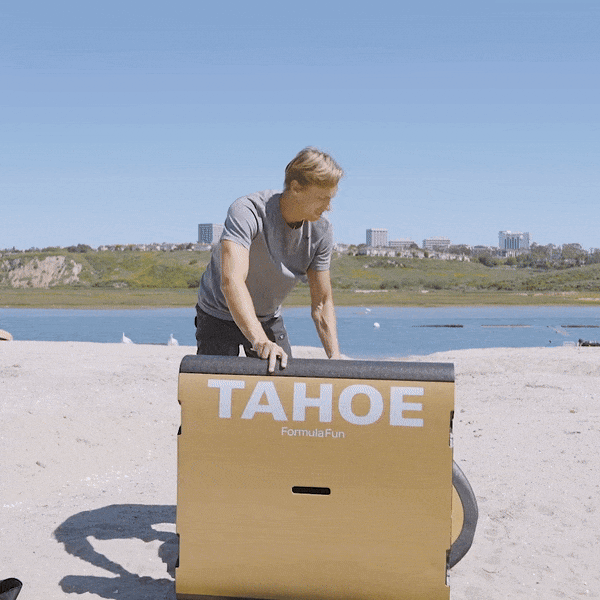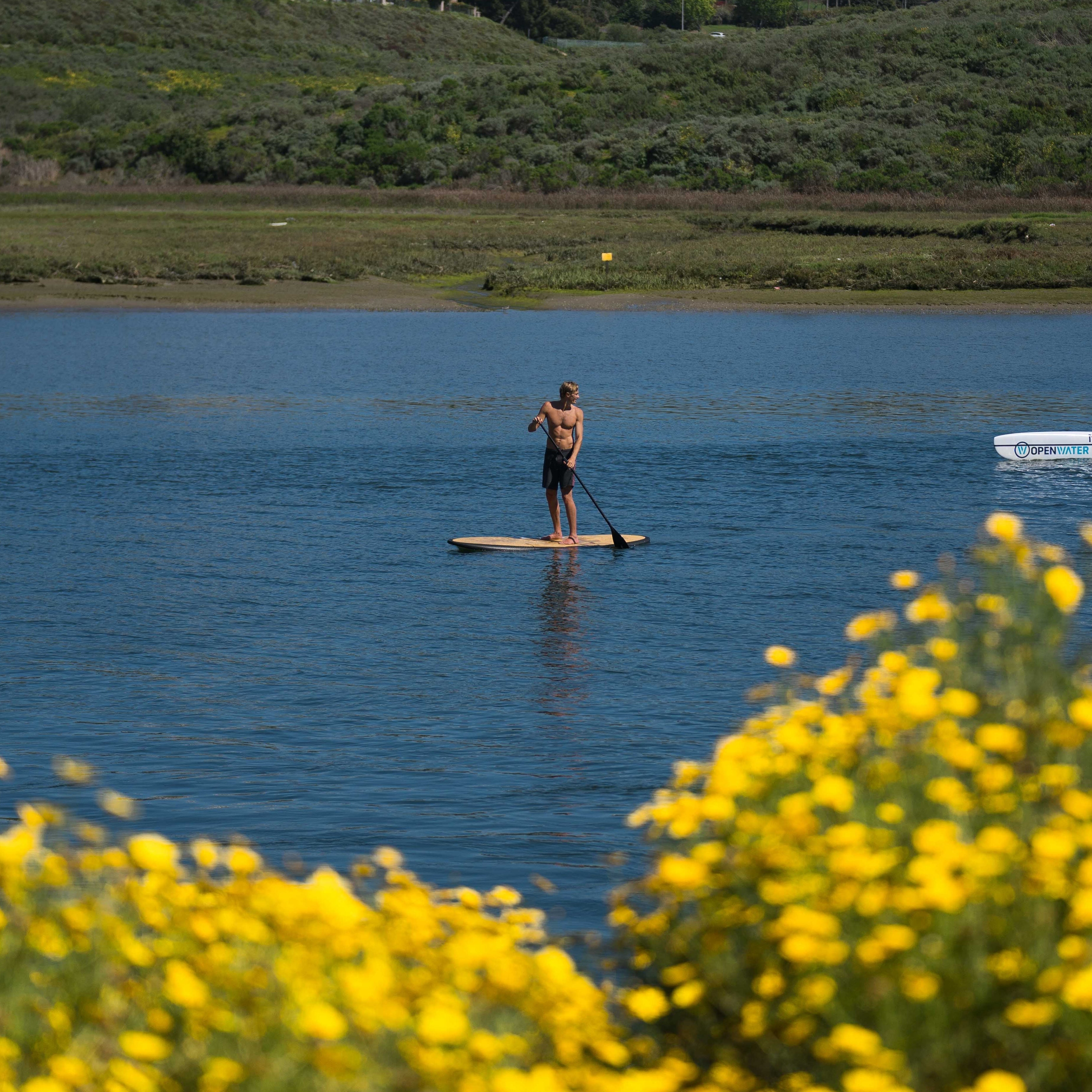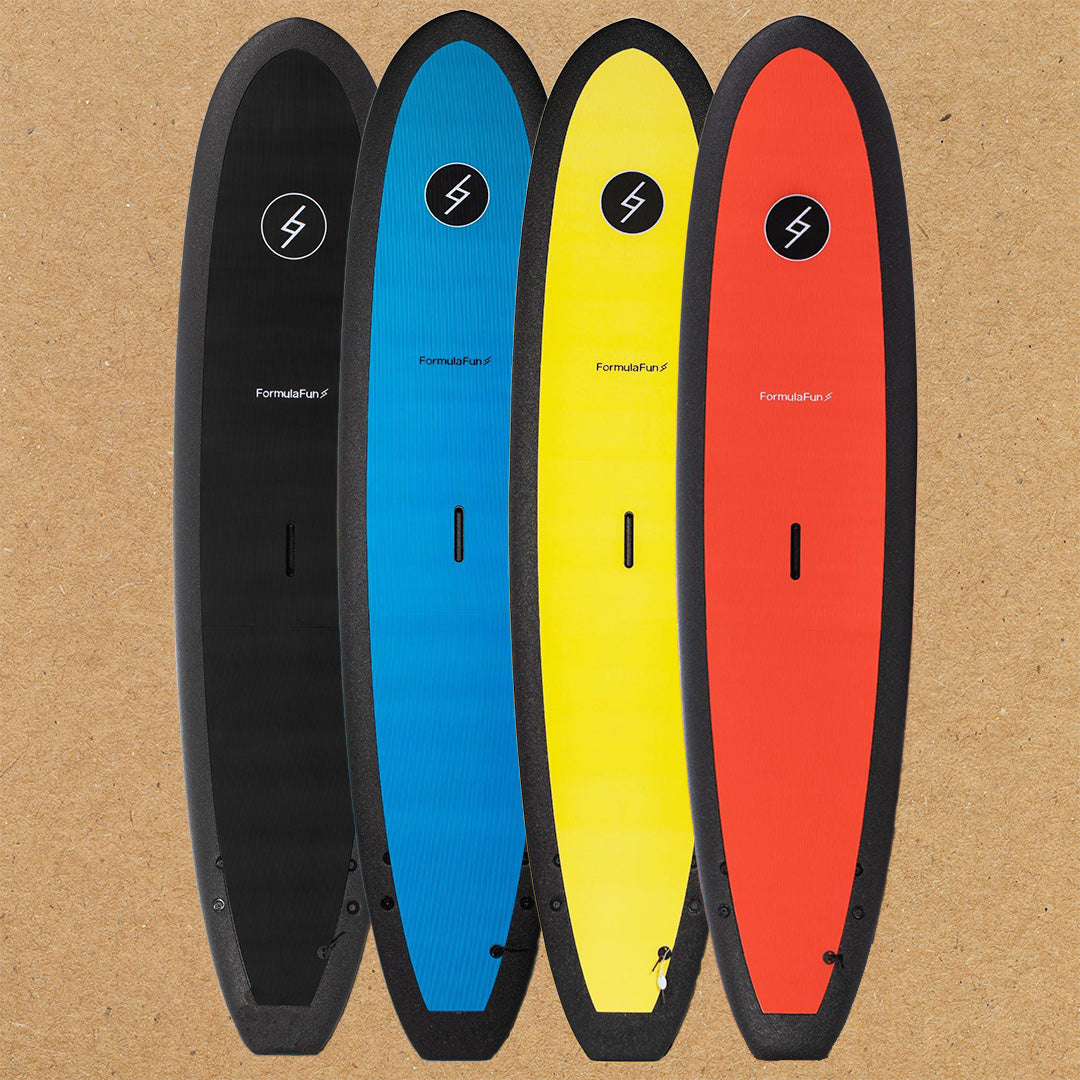TL;DR: Learn how to read surf reports by focusing on three simple metrics—wave height, swell period, and wind direction—so you know exactly when to paddle out and which foam surfboard for beginners to grab.
Why Every Beginner Surfer Needs to Understand the Forecast
A surf report is more than numbers on a screen—it’s your playbook for catching waves, improving skills, and staying safe. Skip the guessing game and use these three metrics to know exactly when to paddle out, what conditions suit your level, and how to choose the right beginner-friendly surfboard for the day.
1. Wave Height (Face Height)
Forecasts list face height, not buoy height. Imagine a person standing beside the wave—it’s how tall that person looks next to the wave’s front.
-
1–2 ft (shin–knee high)
-
Ideal for absolute beginners practicing pop-ups.
-
Board recommendation: Grab the 9’6″ San O, our best foam surfboard for beginners on small-wave days. Its 87 L of foam catches tiny swells early and keeps you moving.
-
-
3–4 ft (waist–chest high)
-
Gives you enough green-wave momentum for longer rides and more turning practice.
-
Board recommendation: The 8’0″ DOHO is your go-to soft top surfboard for learning to surf in these mid-size conditions—stable, forgiving, and lightweight enough to handle.
-
Beginner Tip: If you see “1–2 ft” on a site like Surfline, don’t skip the session—just pick a high-volume board like the San O for maximum glide.
2. Swell Period (Seconds)
The period measures the time between wave peaks. Longer periods pack more power and often mean cleaner, more rideable faces.
-
5–9 s → weak, close-together waves (mushy)
-
10–14 s → punchier, well-formed waves
Rule of thumb: Anything ≥12 s feels noticeably stronger. Even in small swells, a board like the San O will carry you—its extra volume turns weak sets into smooth rides.
For a deeper dive into swell period and energy, check out Surfline’s Forecast Guide or this beginner-friendly explainer on Beginnersurfer.com.
3. Wind Direction & Speed
Wind can sculpt or spoil a wave:
-
Offshore (wind blows from land out to sea)
-
Creates glassy, groomed walls—perfect for trimming and noserides.
-
-
Onshore (wind blows toward land)
-
Kicks up choppy, crumbly faces.
-
Keep an eye on speed too: under 10 mph usually gives a clean offshore shape, while over 15 mph often produces junk.
Pro Tip: On breezy mornings, surf a spot with natural wind protection or lean into the largest board in your quiver (the San O) to maintain stability.
🧮 Your 60-Second Cheat-Sheet
Clean fun = 2–4 ft + 12 s + light offshore
Cruise day = 1–2 ft + any period + glassy/no wind
Screenshot this and stash it on your home screen before your next dawn patrol.
Further Reading & Tools
-
Surfline Forecast Guide – step-by-step breakdown of height, period, wind
-
https://www.surfer.com/how-to/how-to-read-a-surf-forecast
-
-
Beginnersurfer.com How to Read Surf Reports – surf-report basics for newbies
-
https://www.thebeginnersurfer.com/how-to-read-a-surf-forecast/
-
-
Formula Fun Surf Basics & Guides – in-depth articles on gear, wave reading, and progression
-
https://www.formulafunboards.com/blogs/surf-basics-and-guides
-




